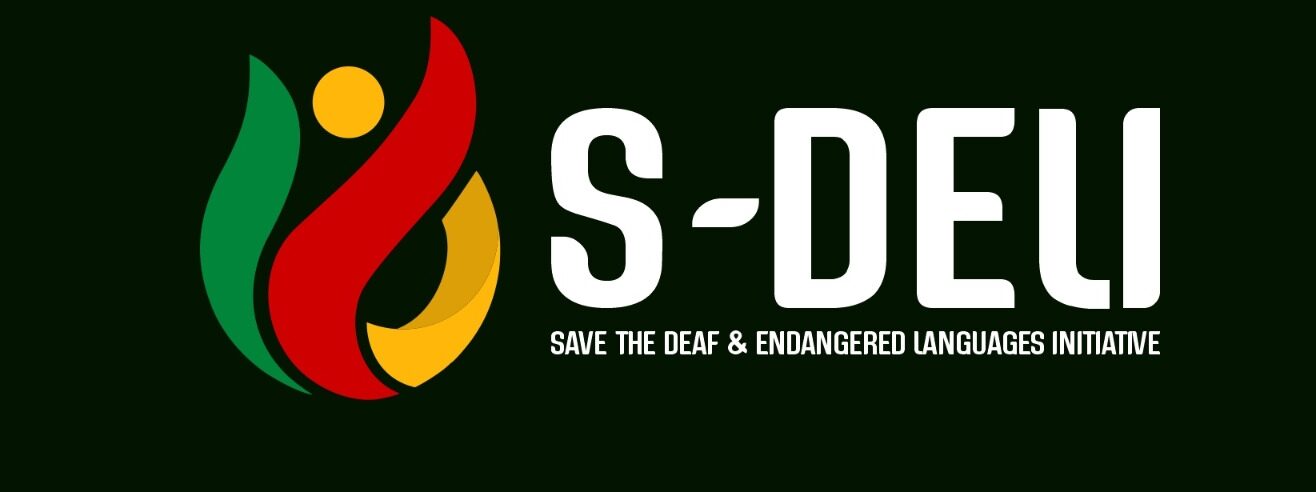The documentation of the INSL in Kaduna State took place from 14th to 21st October 2018 at the Rehabilitation centre in Magajingari, Kaduna North. This was preceded by a two-day training of the team on language documentation, which took place at Denise Hotel, Abuja. The trainers were Prof. Imelda Udoh, Dr Emma Asonye, and Ms Aniefon Akpan. Other speakers included Mr Onyeka Onumara – HoP, Advocacy and Outreaches, Mr Uchenna Ibeh – IT/Media Director. The president of the Nigerian National Association of the Deaf (NNAD) was represented at the occasion by Mr Mumuni and Mr Adelani. After the training, a 12-man team travelled to Kaduna North for the documentation exercise.
The documentation team comprised Blessing Ini (Abuja), Valentine Douglas, Ben Okon (Bauchi), Ogechi Nkwocha (Lagos), Ohakwe Onyediziri, Aniefon Daniel (Rivers), Mr. Isamo Anuma, Mrs. Comfort Anuma, Samuel Henshaw, Rachael Onu, Success Ohaegbulem (Kaduna, the host team), and the Dr. Emma Asonye, CEO, HoP, Global.
The documentation team arrived Kaduna in the early hours of Sunday, 14th October 2018 and was welcomed by the Kaduna team at the Southern part of Kaduna before directing the team to the lodging apartments at De Nevilla Hotels. After settling in, the documentation team went for the opening ceremony organized by the Kaduna Deaf Association by 3.30 pm at the rehabilitation centre. The team was earlier welcomed by heavy rain that preceded the opening ceremony. The entire members of the deaf community welcomed the team with open arms and a lecture was given by the secretary of the KASAD – Mr Silas Nkwoagba who educated the audience on the importance of documenting the Nigerian sign languages. The documentation t-shirts and S-DELI magazine were given out to the officials of KASAD. The ceremony ended on time for the Muslims to attend their prayer sessions.
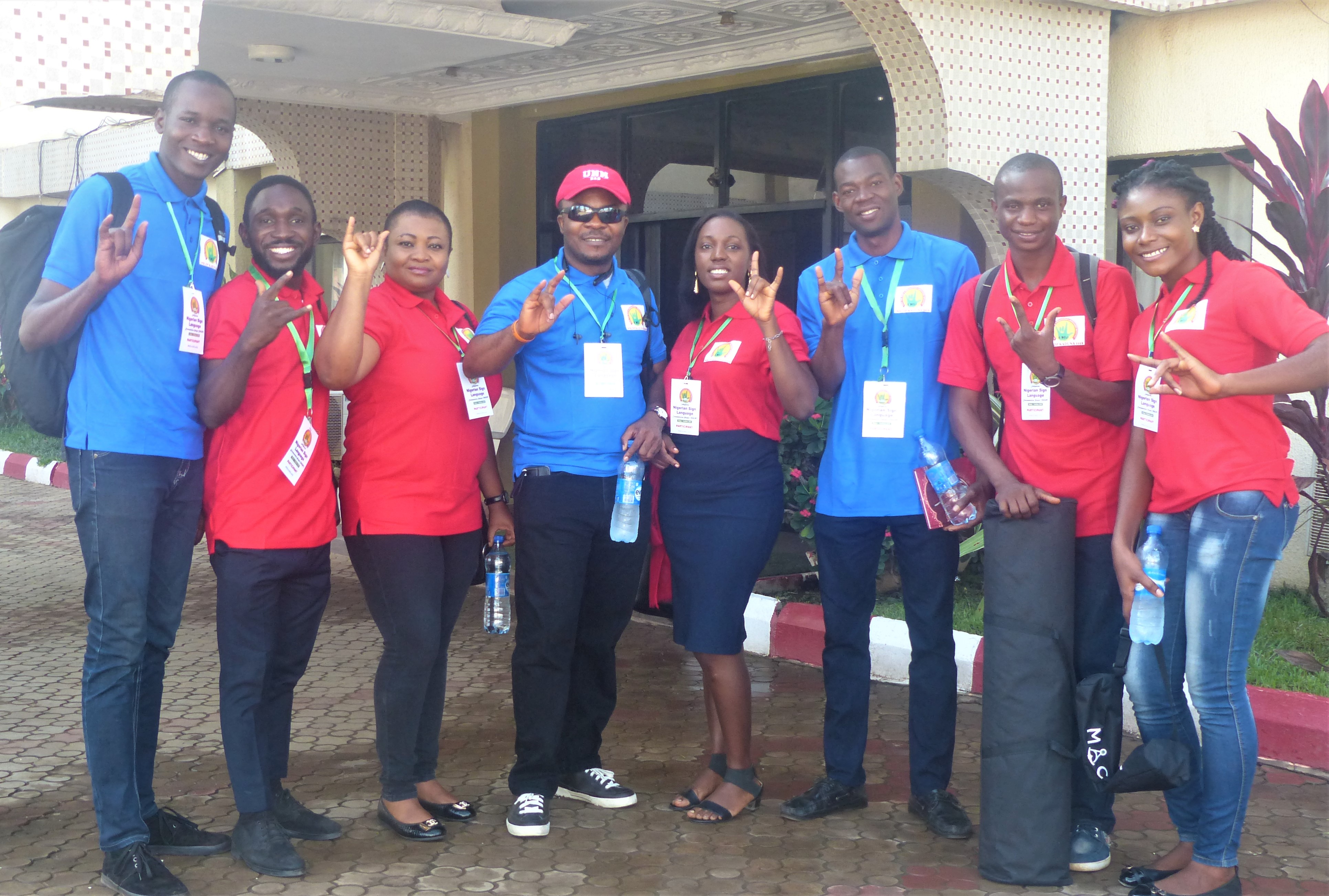
The documentation proper commenced on 15th October 2018 at the rehabilitation centre. The documentation team arrived at the venue by 8.40 am and a search for an appropriate and conducive venue was conducted and an initial location was found. The equipment was set up and the consultants were briefed on what they would be expected to do. However, a few minutes after, the mock recording was performed and the documentation proper was about to commence, there was a loud noise emanating from the sound of a steam generator in a company close to the rehabilitation centre and consequently, the team got relocated to another side of the rehabilitation centre. This ate into the allocated time for the day due to packing and setting up the instruments at the new location.
Meanwhile, the Head of Project, Global took some of the documentation team members to pay a courtesy visit to the director of the rehabilitation centre – Mr Aliyu Yakasai who apologized for being absent from the welcome ceremony on Sunday, 15th October 2018. The director was quite friendly and requested that one of his staff should join our Team at the documentation site to learn the art of language documentation. The CEO presented some copies of the S-DELI magazines to the director of the centre and some photographs were taken by the Team and the director. At 10.37 am, the documentation proper kicked off in the rehabilitation centre in Magajingari community, Kaduna North.
The Process
The documentation of the INSL took some procedure from the first day to the final day with some adjustments. The steps in this process will be explained below in details.
Arrival at the Documentation Center
The team arrived at the documentation site between 8.00 am and 8.40 am daily. The delay in the time of arrival was or could be attributed to lack of a vehicle to convey the team to the site or the search of keke to pick up the team down to the documentation site, but in all, the team made maximum use of their time.
Documentation.
The documentation of the INSL will be discussed in sections. The pre-documentation section was focused on the setting up of the instruments and signing of the consent forms. The documentation section included the elicitation processes while the post documentation section involved the extraction of the waveforms of the video, storage of the recorded video footages and the annotation of the data. These are all discussed below.
Pre-documentation.
Prior to the commencement of the documentation of the HSL, the equipment (two video recorders with tripod stands) was set up by Valentine Douglas and a mock recording performed to test the efficiency of the equipment. The roll-up banner and the backdrop banner were also set up in preparation for the documentation. The S-DELI interpreters (Blessing Ini and Ohakwe Onyediziri) in collaboration with the HSL interpreters explained the consent forms to the language consultants who understood and signed the consent forms (for those that have eligible signatures) while others thump stamp the form. This exercise often took about an hour to be completed. Blessing Ini worked with the interpreters from Monday 15 to Wednesday 17 October 2018 although she also assisted other interpreters on the following days. Ohakwe Onyediziri did the interpreting services during the documentation on Thursday and part of Friday. In addition, Mrs. Comfort Anuma rendered interpreting services on Thursday evening and Friday.
There were five (5) language consultants and one (1) Sign language interpreter for each day. The criteria for selecting the language consultants were based mostly on two indices: lack of formal education of any kind and a fair knowledge of HSL.
Recording of the Bio-data
The next activity carried out after the approval exercise was the recording of the language consultant’s bio-data, this section was anchored by a deaf interpreter from the community, who interpreted the questions to the language consultants who replied by signing the words in the ‘local’ sign language and followed by the interpretation of our team’s interpreter. The first day of this session had only the deaf interpreter from the community and the language consultants, but from the third person on the second day to the last day of the documentation, one of our team’s interpreters would join in the bio-data session to interpret in the conventional urban signed language. This session took approximately 30 minutes including the movements of the language consultants to and from their seats and the pre-recording of this session. Individually, each language consultant used 3 minutes to provide a response to the bio-data questions.
Data Collection
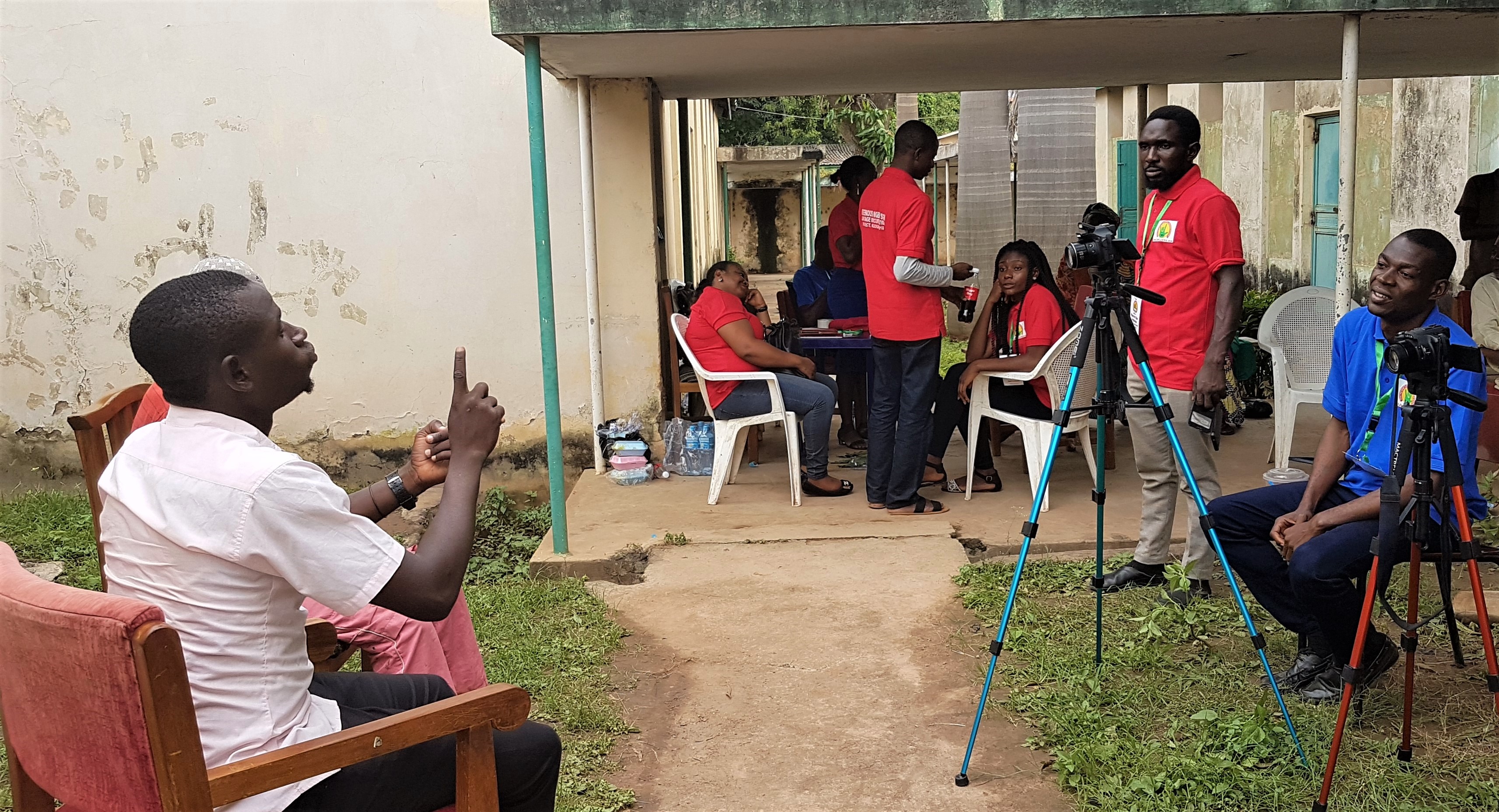
This session involved data sourcing and data collecting techniques. The initial pictorial book proposed to be used for the data collection involved many animal pictures with which the deaf individuals are not familiar. This was an expected challenge because we intended documenting deaf signers with little or no formal education to ensure the ‘sanctity’ of their signing, hence they only could identify the animals in their immediate environment. The procedure used in eliciting the animal data was asking them to identify the animals that they were familiar with in the pictorial book and provide the response in indigenous sign language. The language consultants were able to identify up to 30% of the animals in the book.
As a way of improvisation when we ran out of familiar pictures to show, the Head of Project of S-DELI, Team Kaduna– Mrs Comfort Anuma was asked to go into the Kaduna North local market and take photos of the food items and fruits available. These photos were used for the documentation of lexical items the next day and the language consultants did well in identifying all the items. The deaf interpreters were not needed for this session since the informants could identify all the items by looking at the pictures and then provide the answers for it. It didn’t require a researcher asking the questions as in the other sessions, it only required for whoever was working with the deaf individuals to point to the pictures and the deaf signer would sign the object.
During the documentation of abstract words from the Swadesh world list and other wordlist put together by the team, the deaf interpreters also functioned as the language consultants – they would sign the words in the indigenous signs and our interpreters would sign the same word in the conventional urban (or school sign language), and someone will say out the word in English. It would have been redundant to use the language consultants since they are not literate in English and could not identify written abstract words. It is important to note that the deaf interpreters were bilingual signers and could understand written English and so they were used for this aspect of the documentation.
There was a session dedicated to storytelling daily, some of the stories focused on how they became deaf and others on animals. Time telling and short phrases indicating tense and mood were used for the documentation. In addition, the history of the deaf community in Magajingari community and in Kaduna State was also documented. The specific linguistic areas elicited daily were as follows:
| Table showing daily elicitation of items | ||||
| Day 1 | Day 2 | Day 3 | Day 4 | Day 5 |
| Bio-data | Food items | Body parts | Biodata | Biodata |
| Animal | Household items | Family terms | Name sign | Name sign |
| Food items | Function words | Swadesh wordlist | Swadesh Wordlist | Market-related terms |
| Pronouns | Stories | Phrases | Marriage procedures | |
| Numerals | Name signs | Place names | Child naming ceremony | |
| Stories | Days of the week | History of the deaf community | ||
| Biodata | Biodata | Months of the year | Swadesh Wordlist | |
| Interrogatives | ||||
| Religious terms | ||||
On day 3, the team had a courtesy visit to the Commissioner for Education of the state, this affected the amount of data collected for that day. The visit was to establish a partnership with the Ministry of Education in developing the INSL for Deaf education. The commissioner welcomed the documentation exercise and sent one of his employees to observe what was done at the documentation site the following day.
Dr Emma Asonye anchored the data collection process from Monday through Thursday while Miss Ogechi Nwocha, Mrs Rachael Onu and Mrs Comfort Anuma anchored the data collection process on Thursday and Friday. Our interpreters, Mr Ohakwe Onyediziri and Ms Blessing Ini and the camera handler, Mr Valentine Douglas were wonderful and energetic throughout the exercise. Ms Aniefon, the team coordinator exhibited a quality leadership and the team did the job with great synergy.
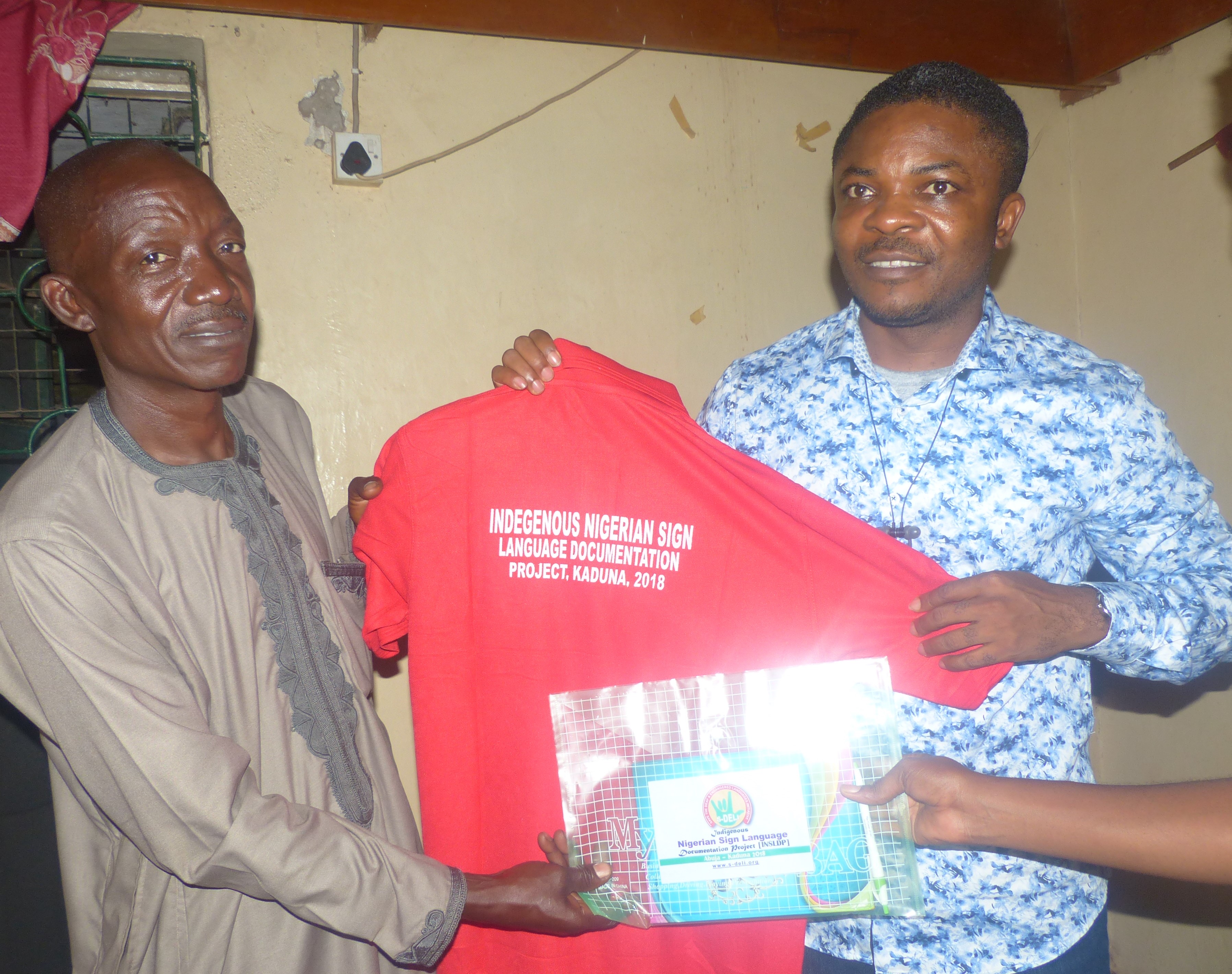
Post documentation
The recorded sessions were transferred to another external storage after 2-3 hours of continuous recording. After the transfer of the recording session, the files were renamed, and the waveforms of the files were extracted using Audacity software to facilitate the annotation of the files in ELAN. On Monday, annotations were done after the entire recording but from Tuesday to Friday, the annotations of previous recordings were done even on the field by Ben Okon, Samuel Henshaw (linguistics scholars) and Ohakwe Onyediziri, while the recording of other sessions was on-going. Annotation was also done at night from 10 pm to 2 am to ensure that interpretive information was added to as many files as possible.
At the initial annotation, only one tier was created which is the ‘rendered text’ tier. This was appropriate for the initial analysis of the animal names and lexical items that were single. However, during the collection of discourses, another tier was required, that is the INSL tier. With the addition of this tier, the services of the deaf interpreters were needed which made us take the decision to call the deaf interpreters to work with the team members on Saturday being the 6th day. They helped to annotate as many files as possible. All the members were divided into two groups with one deaf interpreter to each group. The Saturday annotation started from 10.00 am and ended by 4.15 pm.
Generally, it was observed that the people were happy to be involved in the documentation and also happy to be part of something bigger. They were happy to use their language, and this was portrayed during the storytelling sessions and animal elicitation process. The observers and language consultants smiled and giggled while the person responding to the questions was signing. They loved their language and seemed comfortable to sign with their local and unique codes rather than using the English signed language generally used in schools for the Deaf.
Setbacks
There were a series of setbacks encountered during the documentation at Kaduna and this affected the overall output of the documentation. One of the major setbacks was the inadequate number of laptops for the annotation. This affected the number of files annotated and the overall output.
Another aspect of the setback involved the appropriate instrument used for the elicitation. For instance, the animal picture book that was used did not have all the animals they were familiar with because they were not literate in English.
Also, the male folks declined coming out on the first day with the excuse that they were the breadwinners of the family, hence they had to go and source for food for their families. They sent their wives to represent them during the documentation. But a good number of them showed up the next day on hearing that the language consultants were given financial incentives.
Finally, the Muslim prayer time interruptions affected some aspects of the documentation. The call for prayers before 1 pm and 4 pm daily reflected in some of the recorded files. Although the recording was stopped most of the times when the prayer call started. The time they went for prayers consumed about 30minutes of the documentation time and this also affected the overall output of the documentation.
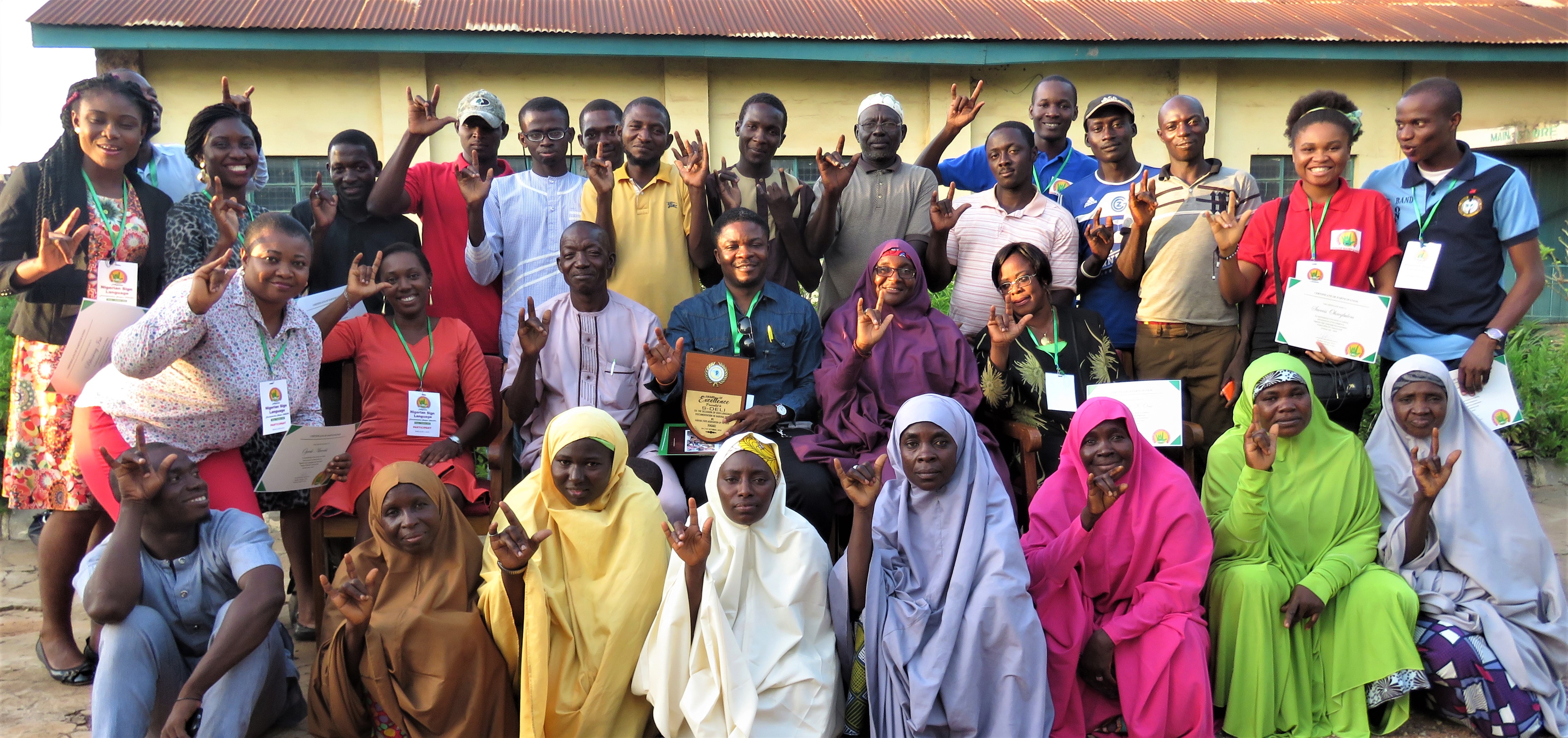
Closing
The Kaduna Association of the Deaf (KASAD) organized a closing ceremony for the documentation team where the language consultants, deaf interpreters and Team S-DELI met. They presented an award of appreciation to the team and each team member received an award of participation from the CEO of S-DELI Dr Emma Asonye, who made the presentation in conjunction with the KSAD Chair, Mr Michael Akaka. The chair, on behalf of the Kaduna deaf community also thanked team S-DELI for their efforts in coming to document their language and also made their voice and story known to the world.
Endnote
The CEO and HoP, Global of S-DELI, Dr Emma Asonye took some members of the team to visit the Nigerian National Petroleum Company (NNPC) Kaduna region to meet with the Manager on a follow up meeting upon a letter for support that was written to the company by our Kaduna team, and from the discussions in the meeting, the outcome appeared promising with positive results.
Compiled by Aniefon Daniel Akpan
Head of Research, S-DELI
